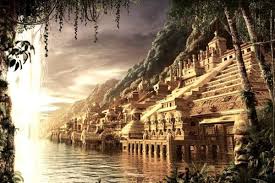
Top 10 lost cities of the world!
The human civilization has flourished all throughout the geological timeline in different parts of the world right from the time when the species evolved itself out as the most intelligent and sociable one. The testimonial evidence of the prosperous human civilizations in different parts are today remnant in the forms of ruins. The silence of the broken castles, the engraved men, the eroded rocks do speak and remind of the marvels that the laudable men had established. Here are the top 10 famous lost cities of the world that remind us of their legends, their wonders and their tragic endings!
10. Ephesus (Turkey)

Ephesus is considered to be one of the most important cities of the early Christianity. It was an Ionian Greek city in ancient Anatolia where the Cayster river flows into the Aegean sea and was part of the Panionian league. Ephesus was founded by the colonists from Athens in 10th century and even served as a site of large Gladiator graveyard. The city hosted one of the seven churches in Asia as mentioned in the Book of Revelation. The city which was once used as the base by the great saint Paul the Apostle got faded eventually through the shades of time!
9. Pompeii (Italy)
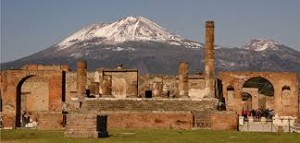
This is one of the famous lost cities with the story of the city being doomed being the soul reason of its far flung popularity. The legend of Pompeii reminds us about how devastating can be the consequences of a natural catastrophe! Along with Herculaneum, this Roman city near modern Naples was destroyed and completely buried during a cataclysmic eruption of the volcano Mount Vesuvius spanning two days on 24 August year 79. The volcano prostrated higher roof-lines and buried Pompeii under many meters of ash and pumice, and it was lost for nearly 1700 years before its accidental rediscovery in 1748. Corpses mummified beneath the ashes got preserved in the debris that reverberate the helplessness of people at the time of the eruption!
8. Troy (Turkey)

Yeah that’s the city on which the Brad Pitt, Orlando Bloom and Eric Bana casted movie ‘Troy’ was centered. Troy was a city part of the ancient Greece was well known for its series of events, legends and history. Currently the ruins lie in the northwest Anatolia part of modern Turkey. The prosperous city was founded in 3000 BC and got abandoned in 500 AD due to the major setback it got in the famous Trojan war. In 1865, English archaeologist Frank Cavert excavated trial trenches in a field he had bought from a local farmer at Hisarlik, and in 1868, Heinrich Schielmen, wealthy German businessman and archaeologist, also began excavating in the area after a chance meeting with Calvert in Canakkale. These excavations pave the way to the revelation of a series of cities that were built in succession.
7. Palmyra (Syria)
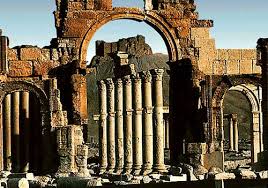
Palmyra, also known as the Bride of the desert was an important city in the ancient times in Syria. It has long been a caravan city for the travelers who crossed the Syrian desert. . The earliest documented mention of the city by its pre-Semitic name Tadmor, Tadmur or Tudmur, is recorded in Babylonian tablets found in Mari. Though the ancient city was abandoned in the 16th century it is still known as Tadmur and a few newer settlements have flourished next to the ruins.
6. Petra (Jordan)

The city of Petra famous for its stone structures and castles carved into the rock is situated on the slope of Mount Hor (Jordan) in a basin among the mountains which form the eastern flank of Arabah (Wadi Araba), the large valley running from the Dead Sea to the Gulf of Aqaba. The Swiss explorer Johann Ludwig Burckhardt made the world see the long hidden city in 1812 which was famously called “a red rose city, half as old as time” because of the mesmerizing red rock carvings. The site was designated as a UNESCO World Heritage Site in 1985 when it was described as “one of the most precious cultural properties of man’s cultural heritage.” Petra’s decline came rapidly under Roman rule, in large part due to the revision of sea-based trade routes. In 363 an earthquake destroyed buildings and crippled the vital water management system and since then the ruins were visited by the Sultan Baibars of Egypt out of curiosity in the late 13th century.
5. Memphis (Egypt)

Memphis was the ancient capital of the first nome of Lower Egypt, and of the Old Kingdom of Egypt from its foundation until around 2200 BC and later for shorter periods during the New Kingdom, and an administrative centre throughout ancient history. Its Ancient Egyptian name was Ineb Hedj (“The White Walls”). Memphis reached a peak of prestige under the 6th Dynasty as a centre of the cult of Ptah after being founded in 3100 BC by Menes, who united the two kingdoms of Egypt. It declined briefly after the 18th Dynasty with the rise of Thebes and was revived under the Persian satraps before falling firmly into second place following the foundation of Alexandria. Memphis was totally abandoned after the establishment of Fustat.
4. Angkor (Cambodia)

Let’s move to the Asian continent which has never ceased to fascinate people through its historical legends. One such is the lost city of Angkor. The ruins of Angkor are located amid forests and farmland to the north of the Great Lake (Tonle Sap) and south of the Kulen Hills, near modern day Siem Reap in Cambodia. Angkor served as the seat of the Khmer empire that was established in 802 when the Hindu monarch Jayavarman II declared himself the “universal monarch” and “god-king” of Cambodia. The temples of the Angkor area number over one thousand, ranging in scale from nondescript piles of brick rubble scattered through rice fields to the magnificent Angkor Wat, said to be the world’s largest single religious monument. The Khmer capital was sacked by the Thai invaders 1431 AD and the people migrated to the south of Phnom Penh.
3. Machu Picchu (Peru)

The lost city of Machu Picchu was described as an absolute masterpiece of architecture and a unique testimony to the Inca civilization and is located at 2,430m altitude on a mountain range above the Urubamba valley in Peru, near Cusco. Often referred to as the Lost city Of Incas, Machu Picchu was constructed in when the Inca empire flourished and was abandoned within a 100 years as the empire collapsed under Spanish subjugation. The strange thing is the citadel of Machu Picchu was never found out by the Spanish and hence wasn’t destroyed. Eventually it became secluded from the outside world as the surrounding forests encroached the site. In 1911, Yale historian and explorer Hiram Bingham brought the lost city to the world’s attention.
2. Dwarka (India)
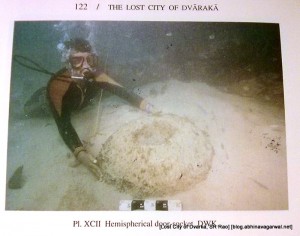
The Indian sub-continent has been the store house of many such historic events and places which has excited the modern day archaeologists to drill out the truth. The lost city of Dwarka situated on the extreme West Coast of Indian territory in the state of Gujarat, occupies an important place in the cultural and religious history of India. The town was the capital of Yadavas and hence associated with the great Hindu God Sri Krishna.Sri Krishna and the Yadavas left Mathura and arrived at the coast of Saurashtra(modern day Gujarat). They decided to build their capital in the coastal region and invoked Visvakarma, the deity of construction. After Sri Krishna left for His abode and the major Yadava heads were killed in fights among themselves, Dwaraka became submerged in the sea. The lost city of Dwarka has been an attraction for archaeologists and in the 20th century scuba divers and excavators have discovered the lost submerged city.
1. El Dorado
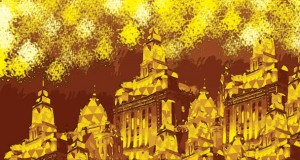
So the lost city that makes into the top of the list is the mysterious and controversial lost city of gold-El dorado. El dorado is basically a term used by the Europeans to describe the tribal chief of Muisca native people of Columbia, South America who as an initiation rite, covered himself with gold dust and dove into Lake Guatavita. Later, it became the name of a legendary “Lost City of Gold”, also known as Manõa, that fascinated explorers since the days of the Spanish conquistadors and was supposedly located on Lake Parime in the highlands of Guyana, South America. Eldorado is considered a myth but people are still in search of that hidden city of Gold!
